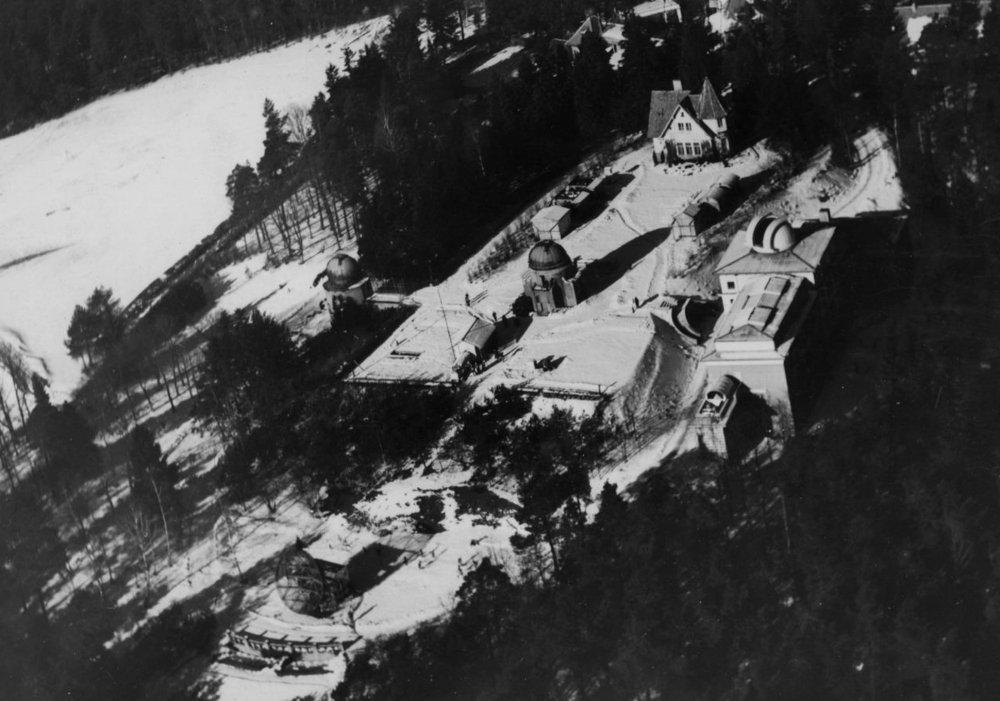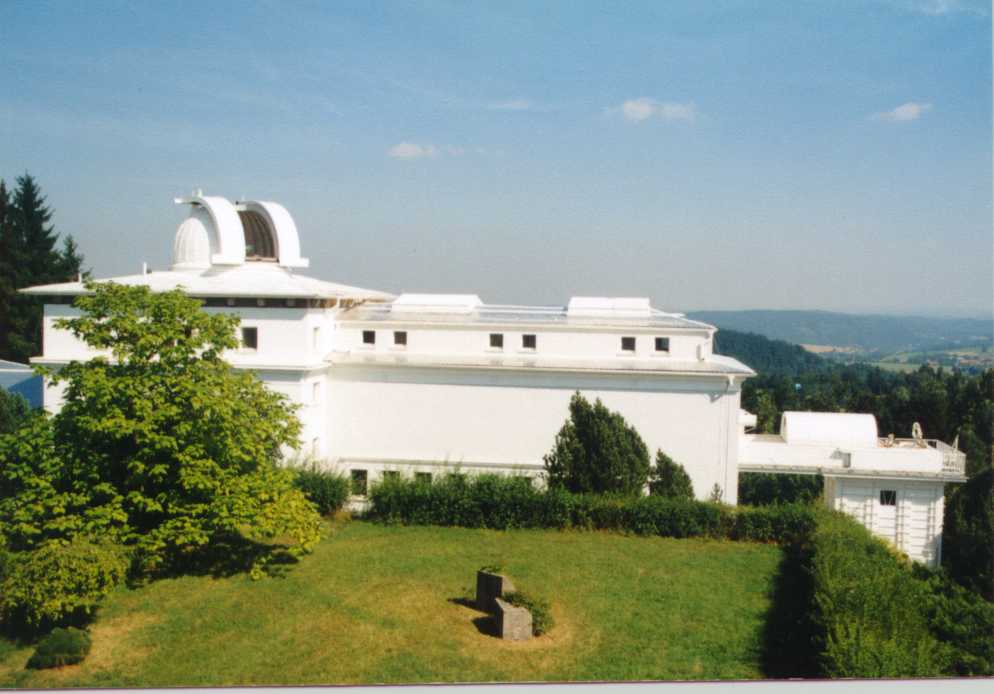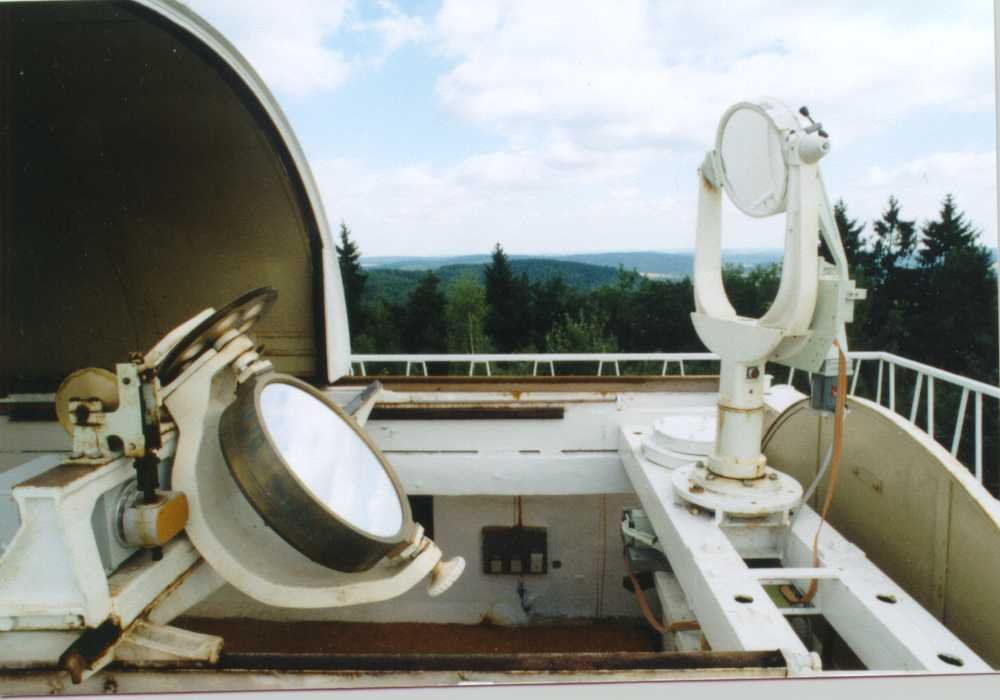Multichannel Flare Spectrograph

Description and Technical Details
Technique of supervision of solar atmosphere active formations
with the Multichannel Flare Spectrograph.
Consider in details now a method of observations of fast processes in solar
chromosphere with Multichannel Flare Spectrograph (MFS) installed in
Ondrejov Observatory (Czech Republic). MFS was originally constructed in
50-th years (1) and reconstructed in the nineteenth (2)

Fig. 1. The optical circuit Multichannel Flare Spectrograph.
Horizontal solar telescope 230 mm/1350 cm (1) create the image on the slit
of the spectrograph - see Fig.1. The main parameters of the spectrograph
are: the size of the lattice - 90 x 100 mm; the resolving power -
600 "/mm; linear dispersion 1 A/mm in the 2-nd right order.
Spectral image is formed in the plane of automatic photo and CCD-cameras.
The working spectral range lies between IR CaII 8542 A and K CaII 3870 A.
To observe solar image on the spectrograph's slit a lens, narrow-band
H-alpha filter (4) ("Daystar") and CCD-chamber are used.
In the case of photographic observations the exposure time is about 0.1 - 0.3 s
for disk flares and 10 s for prominences when the second diffractional order
is used.
 CCD cameras in use have the size 6.4 x 4.8 mm. As a rule an exposure time
is 1/25 s, but it can be shorter if necessary. Camera videosignal is
registered by the videorecorder VSR Panasonic 7350 in the analog form (S-VHS
standard) and can be transformed later into a digital form by means of
special videocard (frame-grabber). Personal computer is used to control this
system - see
Fig.2a.
SUN Workstation is used for final data processing with IDL software (3). TV
image of chromosphere and solar spectra in three bands are shown on Fig.2b.
To improve the system of collecting information about the principal flare parametres
we have installed a new branch into the fist diffraction order of the Multichannel Flare Spectrograph.
It consists of a Wollaston prisma, a lambda/2 plate,
lens and a more sensitive CCD video camera, see Figure 3.
CCD cameras in use have the size 6.4 x 4.8 mm. As a rule an exposure time
is 1/25 s, but it can be shorter if necessary. Camera videosignal is
registered by the videorecorder VSR Panasonic 7350 in the analog form (S-VHS
standard) and can be transformed later into a digital form by means of
special videocard (frame-grabber). Personal computer is used to control this
system - see
Fig.2a.
SUN Workstation is used for final data processing with IDL software (3). TV
image of chromosphere and solar spectra in three bands are shown on Fig.2b.
To improve the system of collecting information about the principal flare parametres
we have installed a new branch into the fist diffraction order of the Multichannel Flare Spectrograph.
It consists of a Wollaston prisma, a lambda/2 plate,
lens and a more sensitive CCD video camera, see Figure 3.
 Figure 3.
Figure 3.
We use a 1 inch CCD video camera ICD-42B with an enhanced sensitivity
as compared to an usual CCD video camera.
It enables us to detect two strips of linearly polarized light in H-alpha line.
The linear polarization can give a good evidence about outstanding directions in the solar plasma (4).
- Valnicek B., Letfus V., Blaha M.,
Svestka Z. and Seidl Z., 1959,Bull. Astron. Inst. Czechosl. 10, 149.
- Kotrc P., Heinzel P. and Knizek M., 1993, JOSO annual Report 1992, 144.
- P.Kotrc, D.Korcakova and Yu.A. Kupryakov: " Motions and structures in
active prominence on September 18, 1995 , A.Hanslmeier and M.Messerotti (eds.),
Motions in the Solar Atmosphere, 239-242, 1998, Kluwer Academic Publishers.
-
Kotrc P. and Yu. A. Kupryakov: 1998 Abstracts of the JENAM'98, p. 47, On the Velocity Field
and Direction of H-alpha Polarization in the May 29, 1998 Limb Flare.



 Optical scheme
Optical scheme
 Electrical scheme
Electrical scheme



 Optical scheme
Optical scheme
 Electrical scheme
Electrical scheme


 Figure 3.
Figure 3.